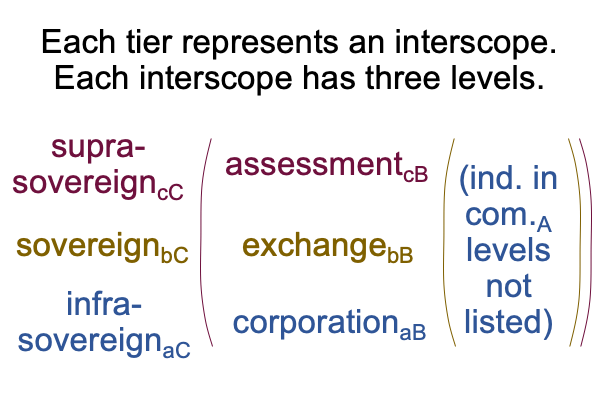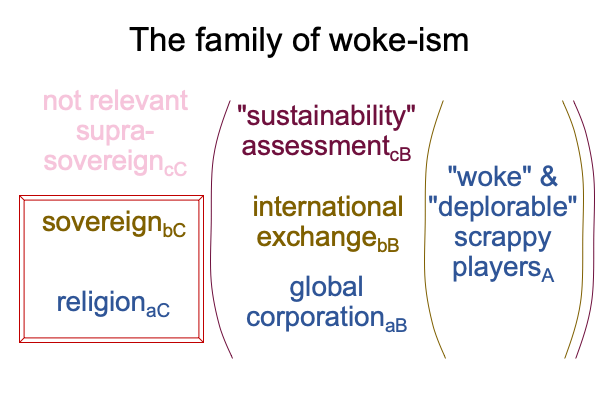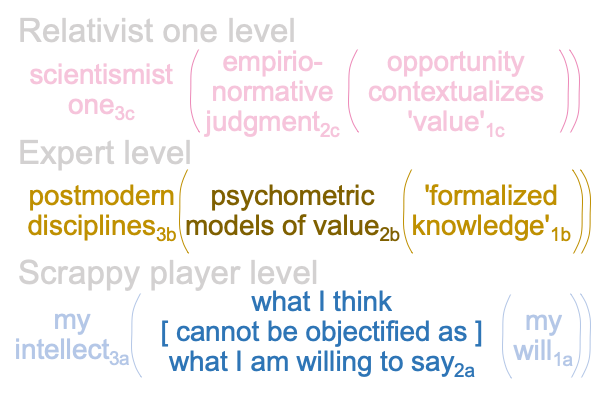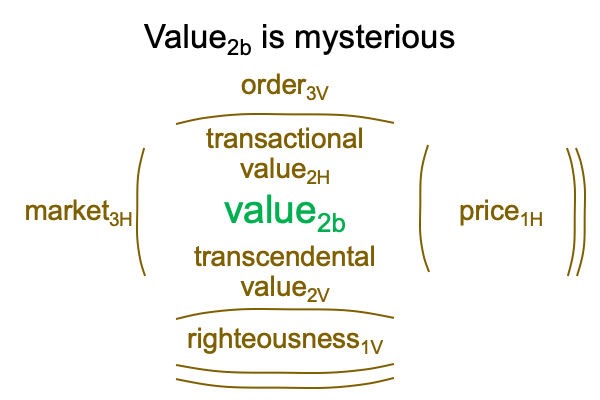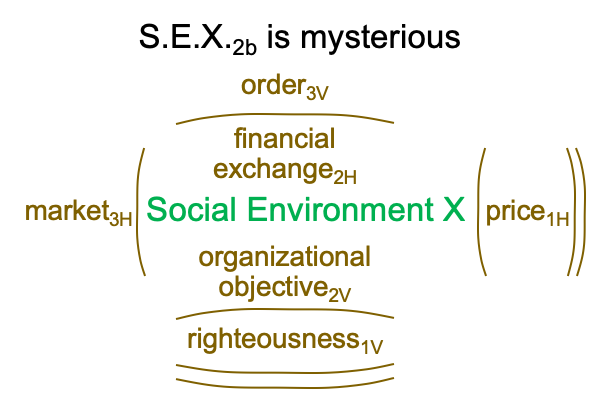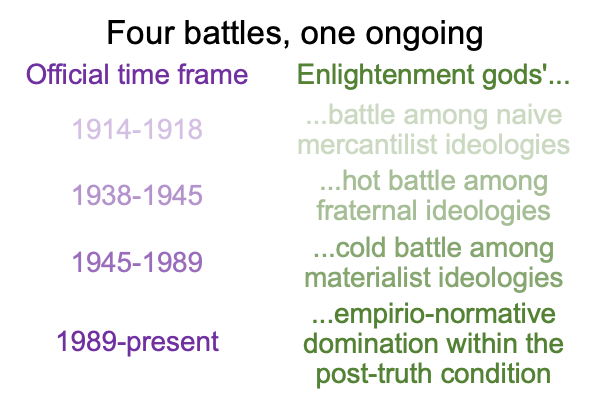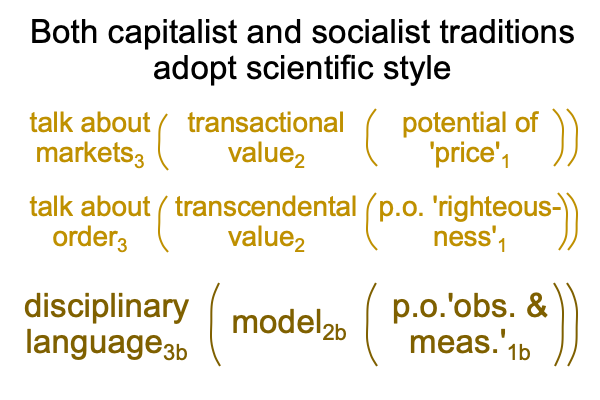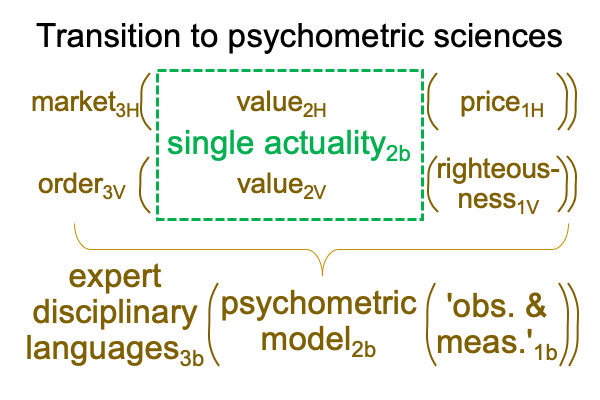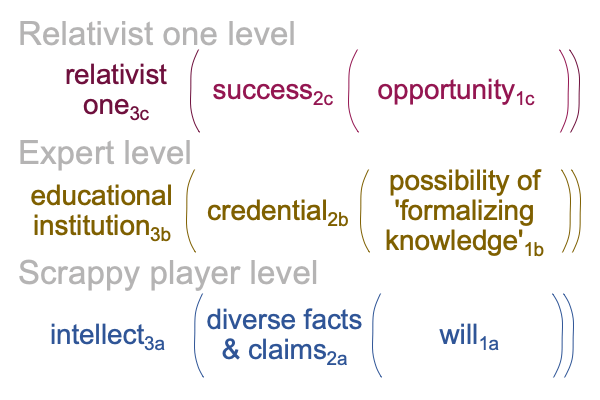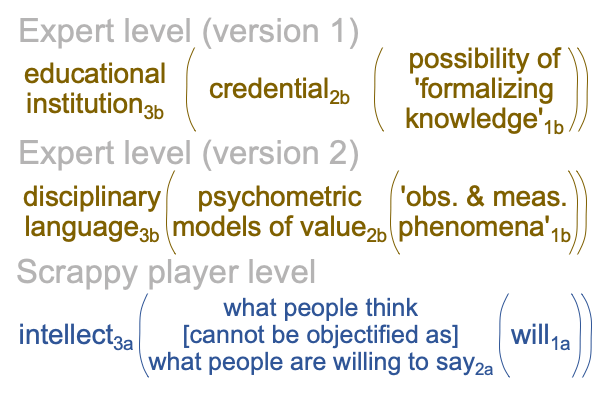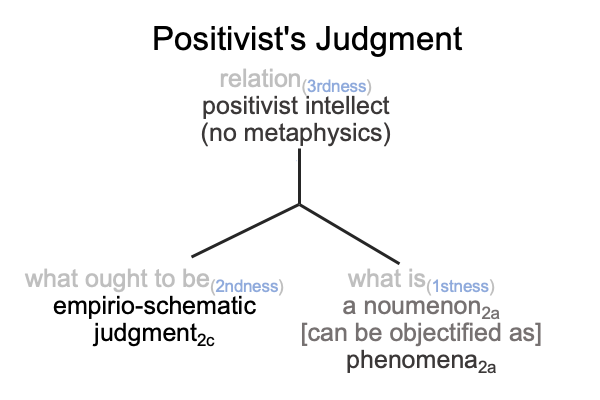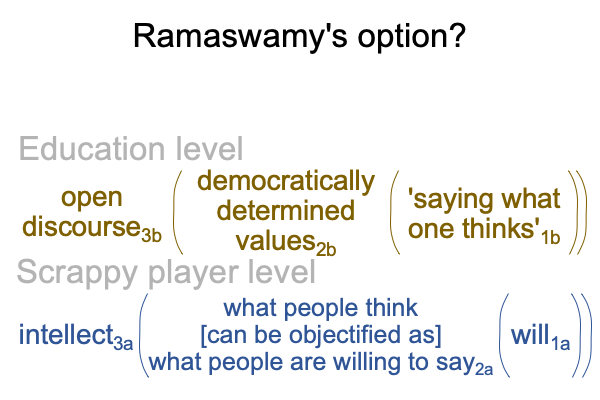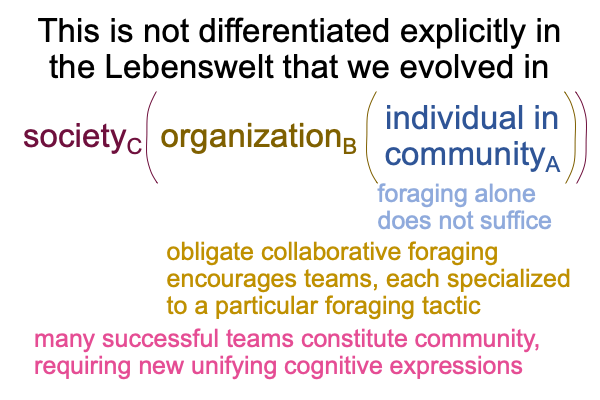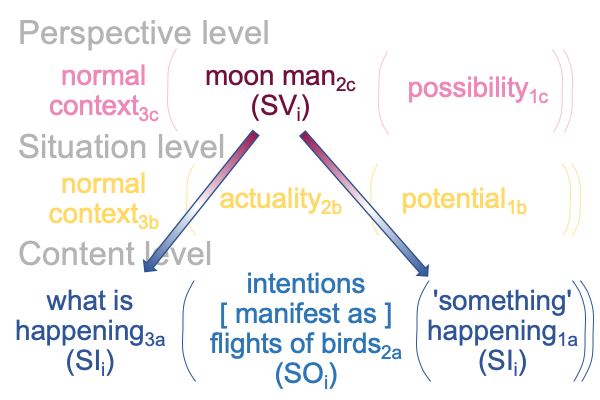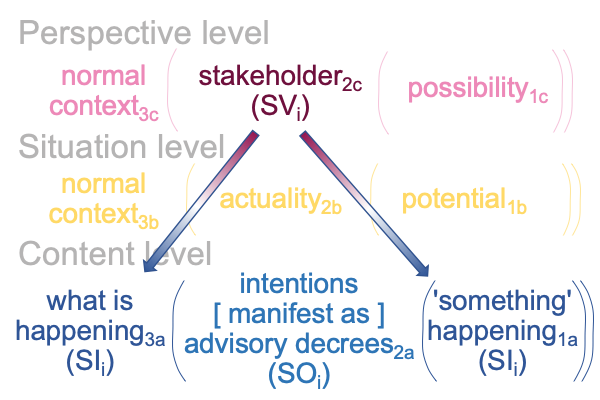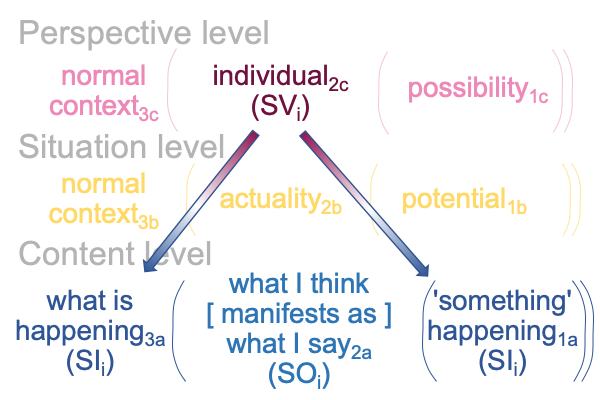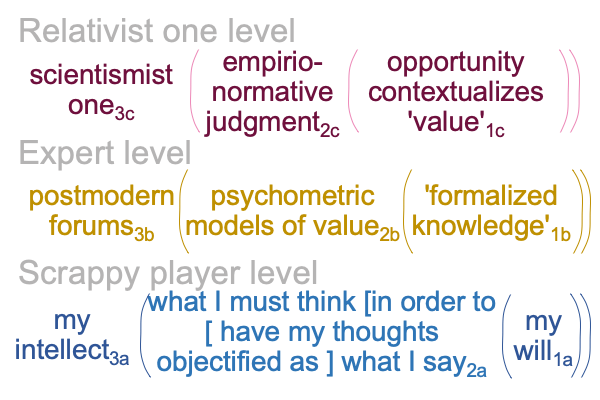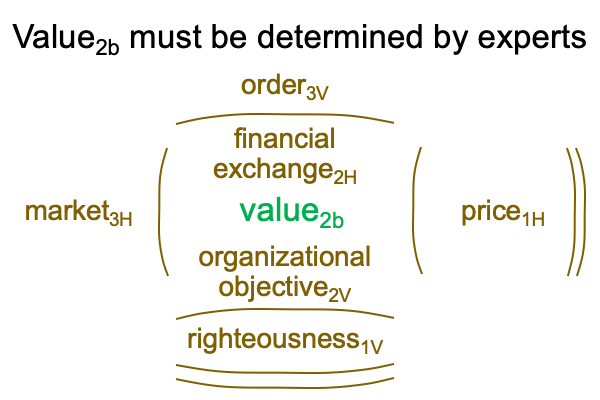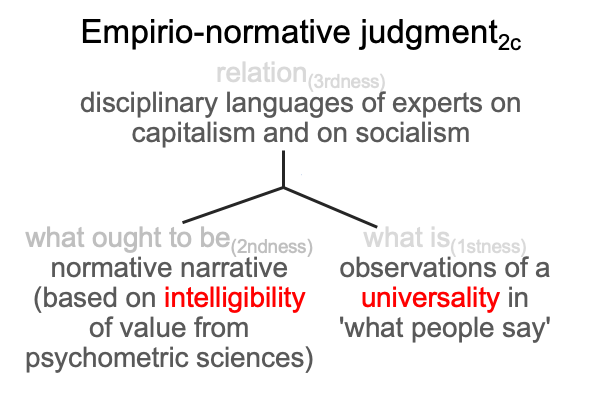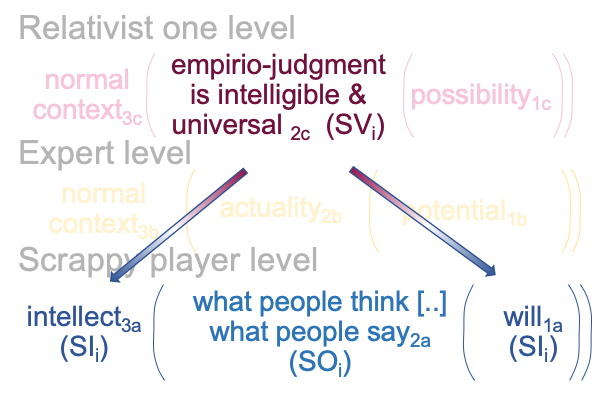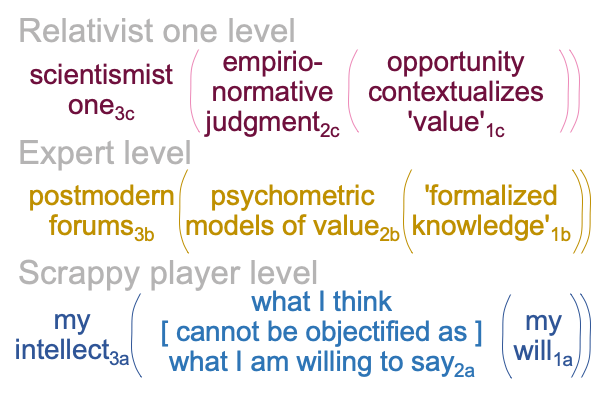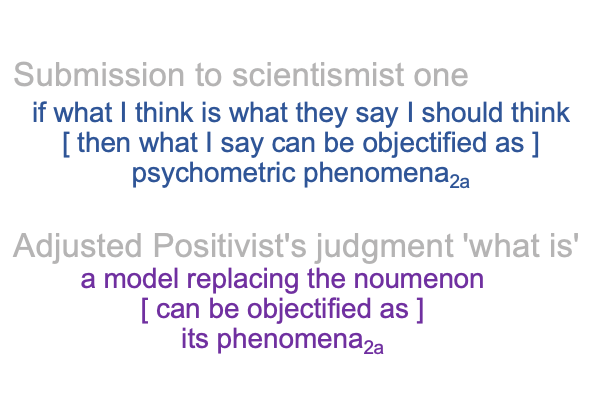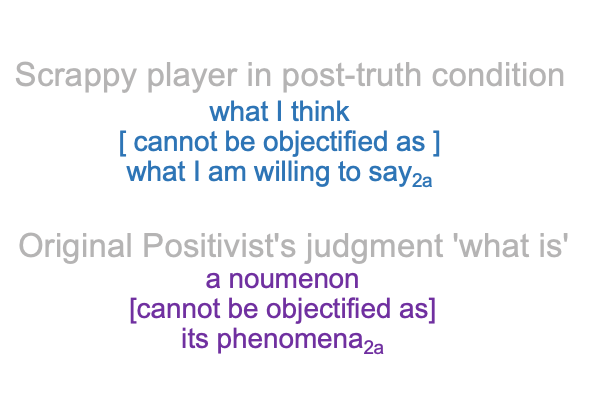Looking at Vivek Ramaswamy’s Book (2021) “Woke, Inc.” (Part 12 of 20)
0392 Chapter seven of Ramaswamy’s book discusses what happens next.
People who say, “This makes no sense.”, self-identify as “not belonging to the interscope of the scientismist one” and then become the targets of various henchmen of… what Ramaswamy calls… “the woke-industrial complex”.
Ramaswamy tells the story of a very intelligent idiot savant3a (of sorts) whose intelligence allowed him to see opportunities for financial transactions that experts could not envision2b, but whose idiocy refused the ministrations of psychometric scientists, who offered warnings concerning the unacceptable things that he was willing to say and do2b.
0393 Of course, Ramaswamy tells great story, but the story does not capture the mundane applications where the institutions of the one of scientism3aC call on sovereign power3bC in order to punish those who are deemed incapable aligning their reason3a,1a to the most recent empirio-normative judgment3c.
0394 In order to demonstrate this, I hybridize the institution level of the societyC tier with the perspective level of the post-truth interscope, resulting in the following diagram.
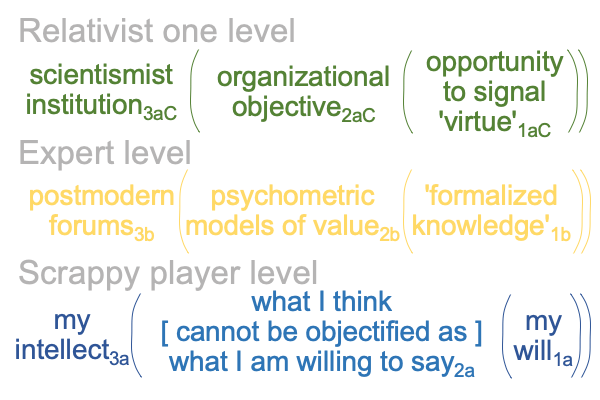
0395 For a ready-at-hand example, the empirio-normative topic labeled “the January 6 insurrection” within the “woke-media complex” should suffice.
The woke-media complex presents an incredibly fun-looking “Make America Great Again” party and protest in Washington D.C. on January 6, 2021 as an “insurrection”. The label has all the hallmarks of expertise. The label is explicitly mentioned in an amendment of the U.S. Constitution forbidding those who had participated in the War of Southern Rebellion (1860-1864) from being elected to political office. Those who had committed “insurrection” must not return to sovereign power.
0396 Does that qualify as “social construction”?
Well, here is the corresponding empirio-normative judgment2c.
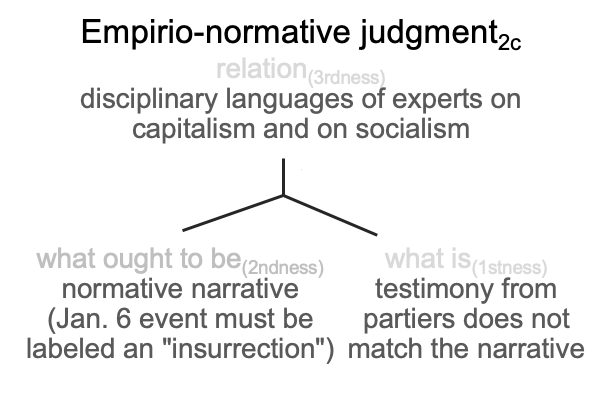
0397 With respect to what is (firstness), the phenomena selected by the woke-political media complex consists of snippets of video footage taken by participants, selectively edited and presented by experts as observations and records of the phenomena of the January 6 event. Very little or none of the resulting cinematic experience matches testimony from the partiers. Indeed, in some locations, capitol police welcomed the party-protesters into the Capitol building when, at the same time, Congress was in session and certifying the vote count from the electors of the electoral college.
0398 That brings me to what ought to be.
Unbeknownst to many of the party-protestors, the electoral-vote counting session entails a long-established protocol. The vice president announces the votes of the electors, one state at a time. A member of the House of Representatives may rise up and challenge the legitimacy of the electors when its votes are counted. Then, the Vice President is supposed to ask, “Is there any senator willing to confirm the accusation?” Of course, typically, no senator is willing to disrupt the proceedings with a confirmation. They have better things to do with their valuable time. So, no confirmation occurs, and the electoral votes are accepted.
0399 What would happen if a senator confirmed the accusation?
Well, both legislatures would go to their chambers and debate the issue for one or two hours and come to a decision whether to accept the state’s electoral votes or send the electoral votes back to the state and ask for the state to evaluate the accusation, then return with the votes of the correct electors. That has to happen within two weeks. After all, it is the electoral college that elects the president, rather than the mob… er… I mean, populations of huge cities with more votes total than many states combined.
0400 So, am I saying that the January 6 party-protestors disrupted this “counting session”, without even knowing what they were doing?
You bet.
0401 Is that why the event is called an “insurrection” by experts?
That is a very good question.
As far as any of the protesting partiers is concerned, the following diagram describes the scrappy level of the post-truth interscope.

0402 Clearly, people who actually attended the event will say one thing and think another. But, my guess suggests what they are thinking and what they are saying show a certain coherence. In other words, what a person thinks [can be objectified as] what that person is willing to say, under conditions when content is not situated by psychometric expertise.
And, what many participants of the January 6 party-protest are willing to say2a contradicts the normative narrative2c.
0403 Therefore, the lawyers of the woke-industrial complex have fashioned legal tools to punish these “insurrectionists”.


